Why didn’t the editing of the trilogy "Feng Shen" work overtime? This matter is too important.
Special feature of 1905 film network "In the trilogy, I have never worked overtime, and my assistants have never worked overtime. Ensuring adequate sleep is very important for creators. Staying up late seems to be efficient, but it will actually lose more. "
On October 31st, Huang Shuo, editor of the trilogy Feng Shen, shared his experience of not working overtime during the editing of the trilogy Feng Shen at the 4th China Film Digital Production Industry Development Forum, a supporting activity of the 2023 China Golden Rooster and Hundred Flowers Film Festival, held in Xiamen. He also won the Best Editing Award in the 36th Chinese Film Golden Rooster Award.
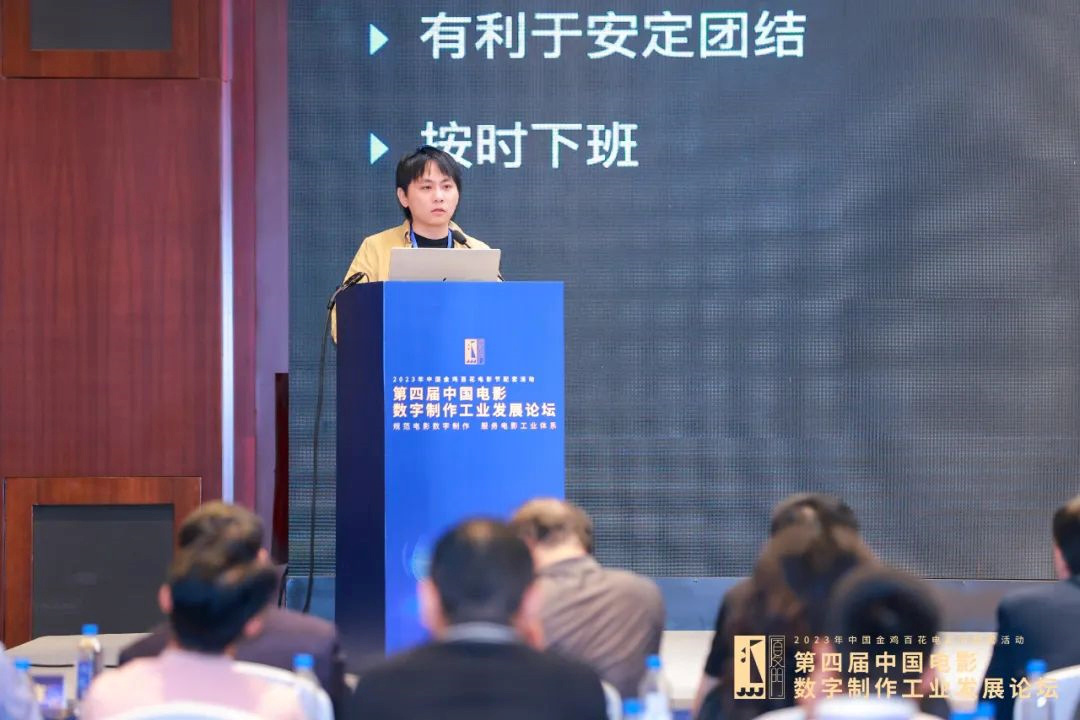
Working overtime all night is the normal work of many film editors. Why can the trilogy "Feng Shen" not work overtime? Huang Shuo said that it is because of the "standardization of editing."
The theme of this forum is to focus on "Standardizing the Digital Film Production and Serving the Film Industry System". Taking the behind-the-scenes production norms of this year’s popular film and television works as the breakthrough point, we invite industry experts and senior practitioners to discuss the application and development of the digital film and television production industry norms, so as to jointly promote the standardization process of China’s digital film production industry and help build a strong film country.
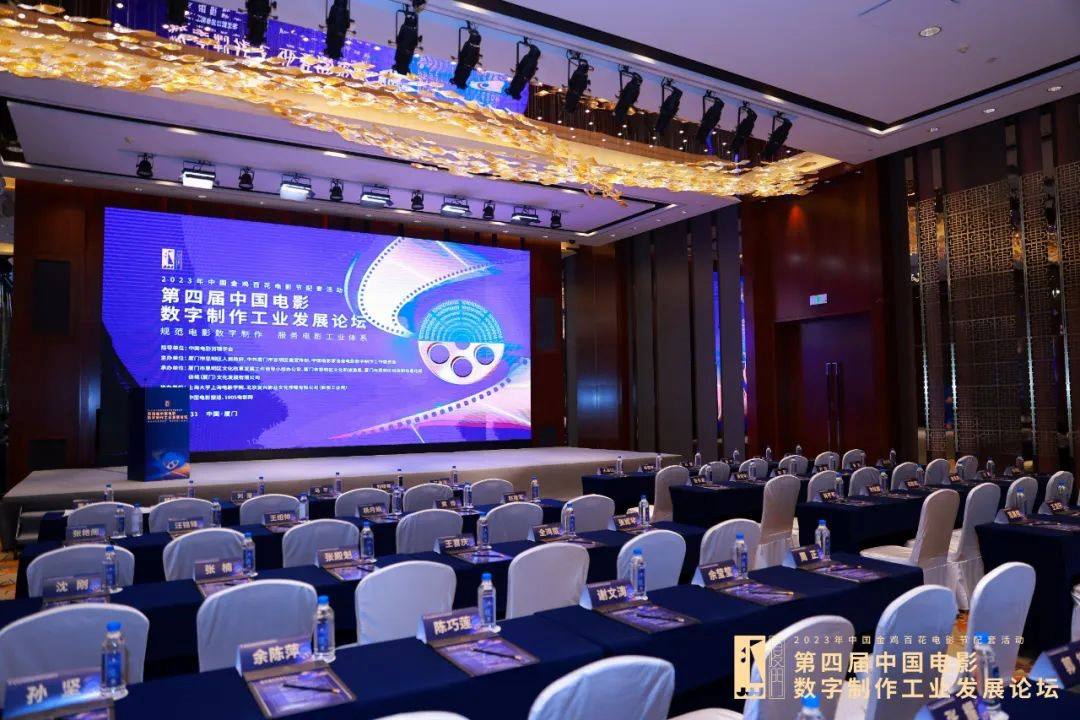
From film to digital,
The Past and Future of China’s Film Technology
On the same day, the forum kicked off with five keynote speeches. Liu Xiaochun, a famous industry expert of Xiamen University and a senior engineer of the former Bayi Film Studio, first gave a speech entitled "From Film to Digital-Adherence and Inheritance of Film Industry Standards".
The technical standards of film industry refer to a series of norms and rules followed in the process of film production and screening, which reflect the development level and innovation ability of film technology. Liu Xiaochun said that China formulated a series of technical standards and specifications in the film era, but in the digital film era, it mainly exerted its strength at the application level, lacking more international discourse power at the technical level.
However, this situation is also changing. A few days ago, the International Organization for Standardization (ISO) officially approved the release of the film standard ISO 5926:2023 "Technical Requirements and Measurement Methods for Stereoscopic Projection of Digital Cinema" proposed and led by China. This is the first international film standard proposed by China, which not only fills the gap of international standards in the field of film technology in China, but also breaks the monopoly of foreign technical standards.
While the film industry embraces all kinds of new technologies and processes, how can we not forget the origin of the film? How to tell a good movie story with brand-new technical means and tools? Liu Xiaochun believes that this is a problem that film practitioners need to think about at present.
In his understanding, "the essence of film lies not in the media, but in the magic it creates." As the guardian of this art form, it is our responsibility to uphold its standards and pass on its rich heritage to future generations. Whether it is film or digital, let us continue to weave fascinating, inspiring and enduring stories. "
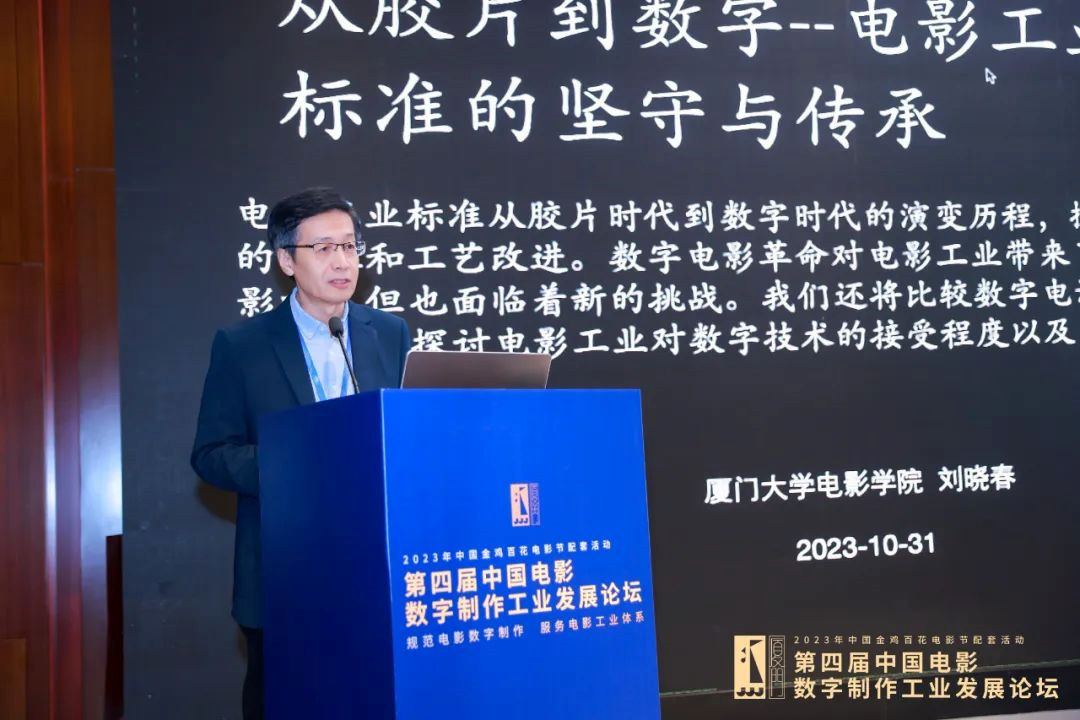
In 1928, the difficult film processing technology was used to create a visual spectacle. Nowadays, the upgrading of sci-fi movies such as series and the high-tech format represented by CINITY are leading the development of sci-fi movie industry in China. China’s film technology has experienced more than a hundred years of glory and vitality.
In his speech, the Deputy General Manager of China Film Digital Production Base summarized the road of independent innovation of film technology in China. In the new era, there are eight major achievements in China’s film science and technology innovation, including film digital production system and its application research and development, CINITY high-tech format film projection system, national film cloud production service platform, "China Film Shensi" artificial intelligence image processing system, film digital restoration and enhancement system, "China Film Fantasy" all-digital virtual shooting system, actor digital collection system and virtual shooting virtual production and cloud production.
Among them, there are many projects born in practice, such as CINITY LED film projection system with complete independent intellectual property rights, China Film recently completed China’s first Peking Opera film "Mrs. Anguo" with LED virtual shooting technology, the 8K dome film "Chasing China" permanently screened by communist party Historical Museum in China, and the VR panoramic film "High Precision Reproduction-Seeing the Beauty of the Times" as a gift for the 100th anniversary of the founding of the Party.
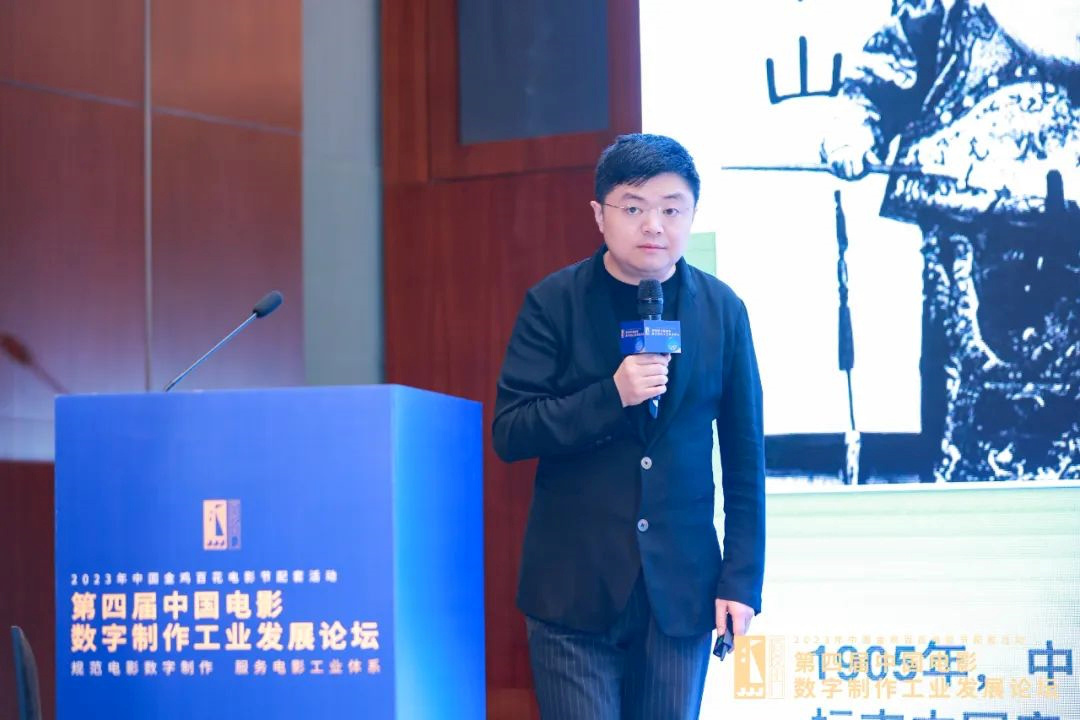
At the same time, the science and technology of China’s film industry has to face the dilemma of western technology monopoly, the industrial problems under the background of technical bottleneck and international competitiveness, the balance between technology and industry, the structural imbalance of talent demand, the problems of financing and investment, and the challenges formed by the emergence of artificial intelligence capabilities.
How to strengthen independence and promote innovation? Ma Ping suggested that we can start from many angles, such as strengthening the system construction of film standards, enhancing the R&D capability of core technologies, building China’s film science and technology industrial chain, promoting film innovation with technology empowerment, combining policy support with market drive, establishing and improving the talent mechanism of film science and technology, strengthening international cooperation, and strengthening intellectual property protection.
Virtual production, editing production, visual effect production
How to better serve movies?
From visual preview of storyboard, live real-time interactive preview based on blue/green screen to movie virtual production based on LED background wall, the forms of movie virtual production are constantly developing, the technology is rapidly iteratively upgraded, and the application is more extensive.
Zhao Jianjun, an associate professor in the Department of Film and Television Technology of Beijing Film Academy, expounded the influence of virtual production on the film digital industry in the new era in his speech from six aspects: studios and production bases, LED screen manufacturers, film and television equipment manufacturers, visual effects and engine enterprises, producers, universities and scientific research institutions.
By 2023, more than 500 LED virtual production studios have been established around the world. He pointed out that the display technology level and market share of LED background wall enterprises in China have taken the leading position in the world. Movies and TV series "Fox Demon Little Matchmaker" and "Cloud Feather" also show that the application of LED virtual production in China’s film and television industry is gradually maturing.
At present, virtual production promotes the intelligent and virtualized upgrading of the film and television industry — — Artificial intelligence, virtual digital and other technologies can better assist creation, save labor, and realize creativity more intelligently and efficiently; The boundary between reality and reality is broken, and the virtual and reality are further integrated from "making movies" to "making movies". For the future, Zhao Jianjun thinks that virtual production will be further strengthened in process innovation, industrial upgrading, personnel training and technological breakthrough.
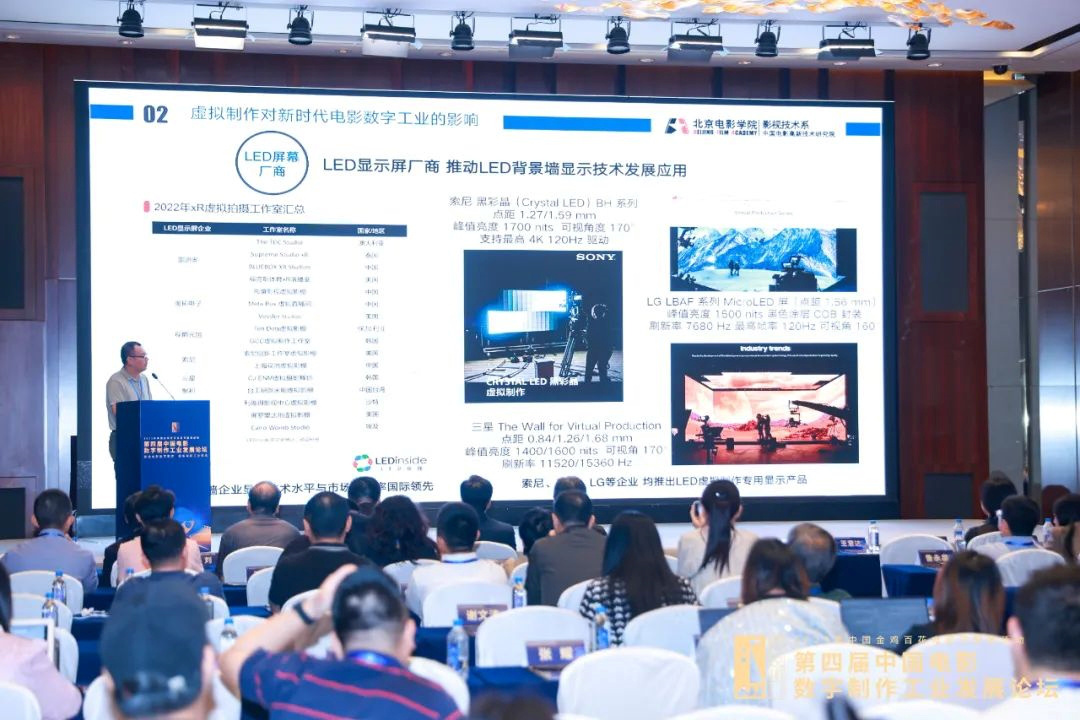
In his speech, Huang Shuo, director of the China Film Editing Society and editor of the trilogy "Feng Shen", revealed that in his editing experience, he had encountered the situation that the sound department and the visual effect department got different versions after editing. The problem lies in the lack of standardized processes.
In his view, editing is the hub, as the starting point of the whole later work, which plays the role of connecting various departments. Standardized editing can reduce the communication cost within and between departments, reduce the probability of mistakes, be conducive to stability and unity, get off work on time and improve work efficiency.
So how to achieve standardization? Huang Shuo introduced the editing process of the film by taking the trilogy "Feng Shen" as an example.
"The editor’s life is also his life," Huang Shuo said. Editing needs a good working environment. Many editors in the group cut films in hotels, and the crew gave the editors a hard bench to work. The trilogy "Feng Shen" was specially equipped with a comfortable editing room for the editing department. The film was shot in two groups, A and B, each with two live editors and three editors in the back editing room. Everyone’s division of labor is very clear, and there will be no situation where one person has to do three jobs.
In specific editing, they have a professional technical manual, VFX Lineup with detailed data of each shot, and a modification form formed for each editing modification, which is convenient for visual effects, sound, music and other later departments to understand the editing adjustment and modification of the shot … Through a standardized operating system, the editing department and other departments can better cooperate with each other and realize the efficient operation of film production.
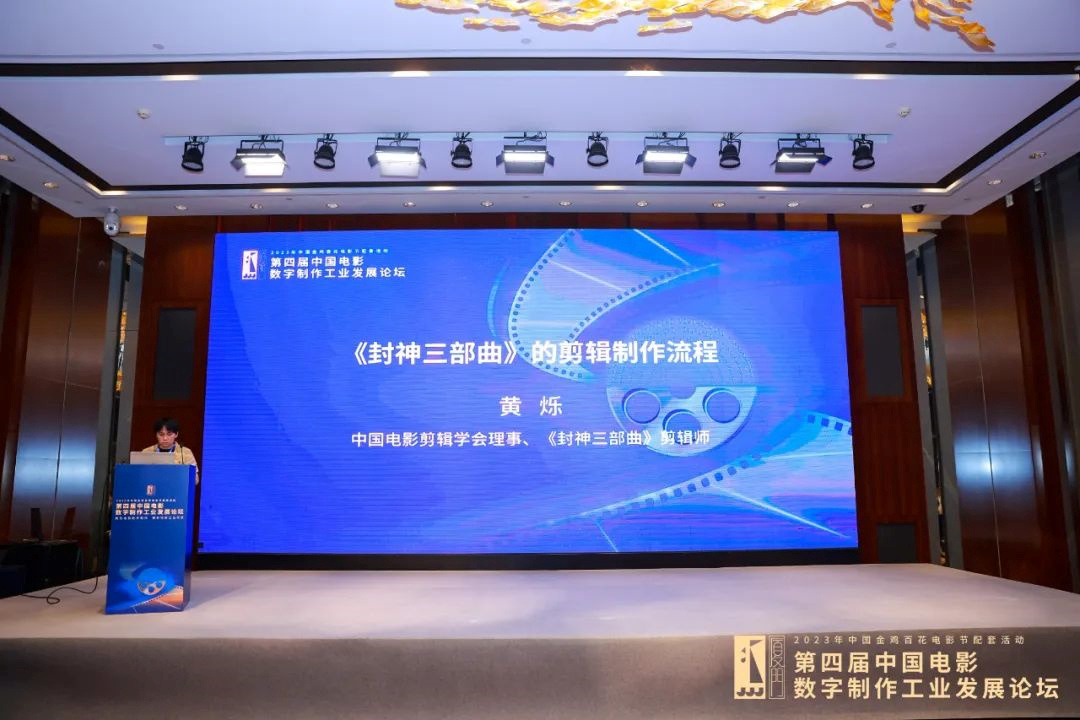
Jessica Yang Yuejuan, a senior visual effects producer and visual effects director, gave a speech entitled "How Visual Effects Serve Current Movies — — The shackles and expectations in the production process also mentioned that there are many irregular behaviors in many post-productions. For example, visual effects and editing have the problem of "cutting well but not producing well", so standardization is imperative.
"How can visual special effects create new heights in the industry with limited time and limited expenses on the premise of improving their own capabilities? This is not empty talk, not a lie, not a big talk. " As a visual effects producer of films such as The King of the Sky, Yang Yuejuan shared the communication, cooperation and production standards of visual effects with various departments in the early stage, shooting stage and later stage in the process of digital industrialization of China movies.
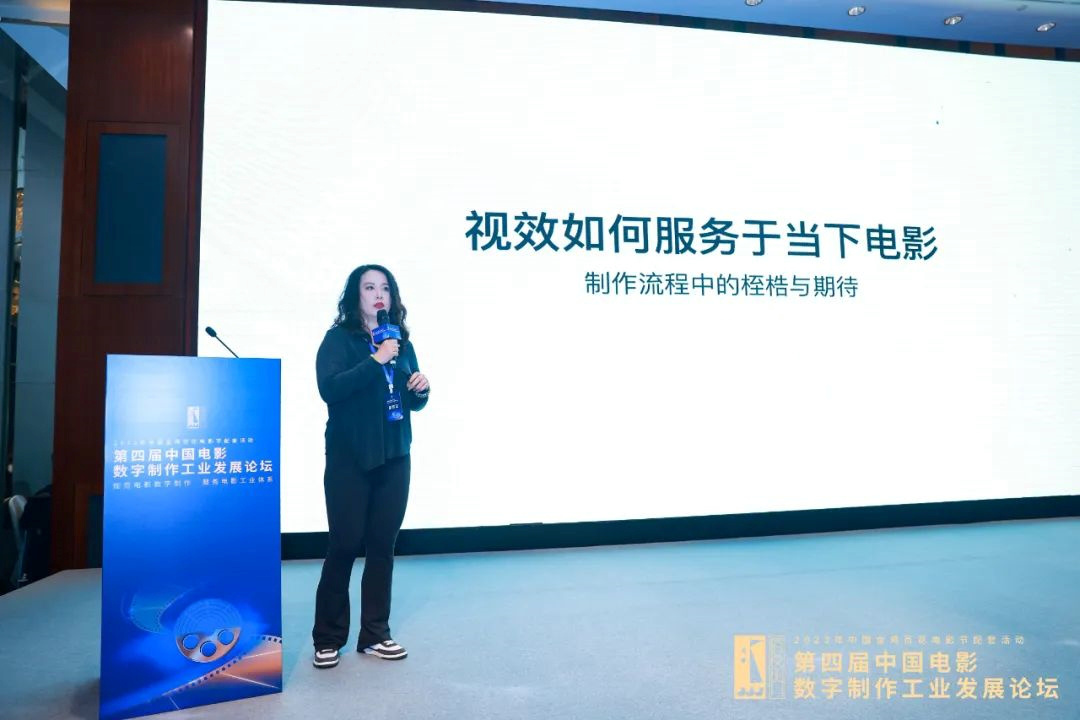
"Such a complicated process and so many steps need standards", so Yang Yuejuan puts forward professional suggestions such as visual effect grading specification, visual effect production description specification, field data collection specification, output and naming specification, pre-adjustment process, color space test, file submission specification, large file naming specification, channel naming specification, visual effect file quality inspection, file handover specification, file transmission and copy safety specification, so as to make the creator pay attention to the creation itself.
Strengthen the standard of digital film production in China,
Is the impact of AIGC big?
In the second half of the forum, a round-table seminar was held, presided over by Zhang Yange, secretary-general of the Film Digital Production Working Committee of the Chinese Film Association. Relevant persons in industry and academia expressed their opinions on the current situation and expectations of China’s film digital production norms, the value and significance of China’s film digital production norms to personnel training, and the influence of AIGC (Generative Artificial Intelligence) on film digital production norms, and made full exchanges and suggestions.
The national first-class director and the president of the Film Digital Production Working Committee of the Chinese Film Association recalled that in the film era, story board had to be written before the film was started. In the past, there was a booklet on production norms in the film studio, which was dubbed "the film constitution" by the industry. Nowadays, from film to digital film era, it is also necessary to establish a standard system.
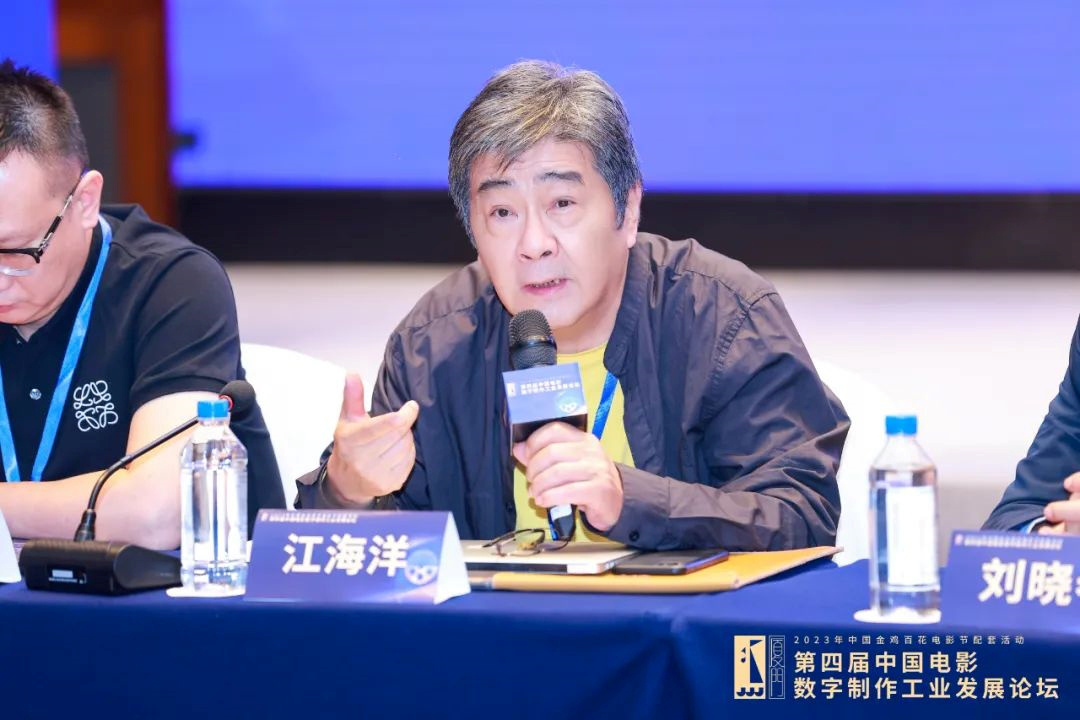
Ma Ping said that China’s film digital production standards are entering the 1.0 era, and the industry should be alert not to leave the system being established behind, and should lay a solid foundation for 1.0 before embracing the 2.0 era. Huang Xiaoyu, director of the laboratory of the high-format film department of Huaxia Film Distribution Co., Ltd., believes that the 1.0 era is a stage for each department to explore and form the production norms within the department. The key word of the 2.0 era is "cohesion", and the production norms of each department should be opened and connected in series, and the 3.0 era will further move toward "landing".
This year, "China Film Digital Production Standard" was officially released. As the first normative reference book in the industry, it includes editing, virtual production, cloud production, visual effects, sound, color matching, DIT, mastering and other process technologies, sorting out the problems of process standards that have not kept pace with the times in the industry for many years, and providing operation guides and workbooks for many jobs in film digital production, which is well recognized by the industry.
Liu Fan, a researcher at the Film and Television Department of the Chinese Academy of Art, suggested that when the industry realizes the importance of standardization, it should continue to promote the standardization of film digital production, for example, a standardized white paper can also be launched in the filming process. The cultivation of digital production talents is also crucial, and the digital production norms need to be vigorously promoted to film and television colleges and universities. Yu Kangchun, a professor at Shanghai Film Academy, suggested that training camps and alliance organizations could be held under the concept of "integrating production with learning".
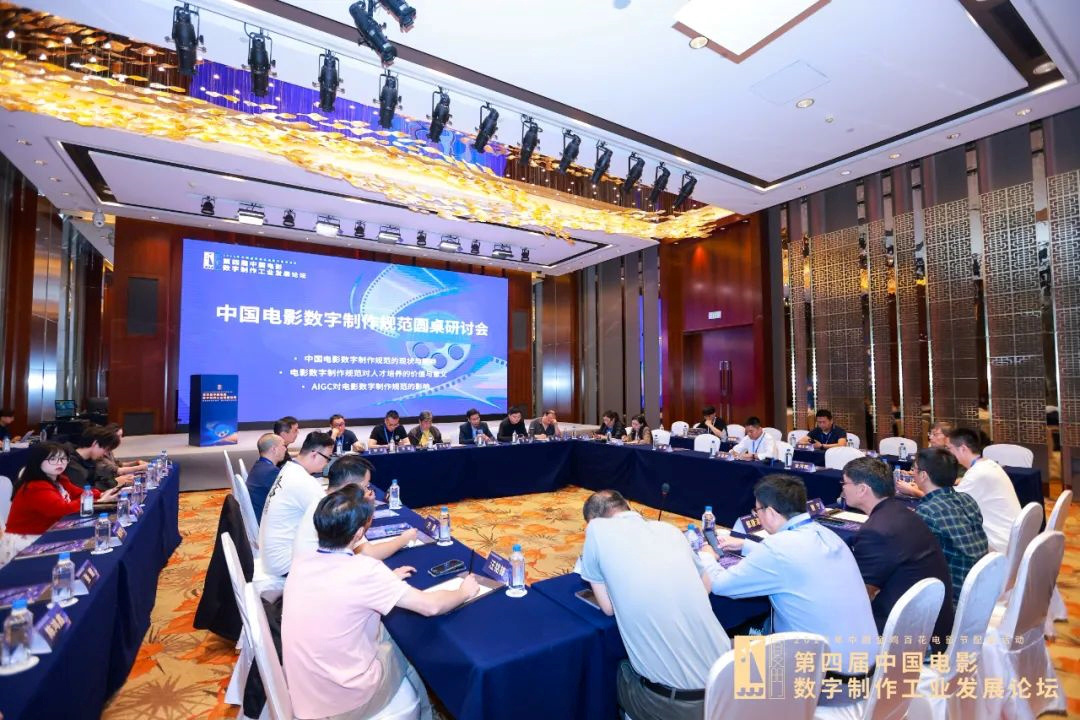
The rapid rise of AIGC is also a hot topic in the current scientific and technological development. How much impact will it have on the film digital production standards? Many industry participants said that they would always pay attention to the impact of AIGC on the industry, but they would also embrace the development of new technologies.
In terms of production efficiency, for example, the speed of the split-mirror diagram produced by AIGC is faster than that of the split-mirror, but compared with manual work, how to calculate the charging method? Do you want to reduce costs and increase efficiency? This requires the industry to continue to discuss. In the eyes of most guests, although AICG can improve the working efficiency of some aspects of film digital production at present, it still does not have the creative wisdom and productivity of human beings and still depends on film artists.
No matter how the film technology will develop in an unimaginable trend, as Liu Xiaochun said in his speech, "the integration of technology and the demand for novel experience will determine the exact trajectory of film technology. However, one thing is certain: the future of the film will be as groundbreaking as its legendary past. "